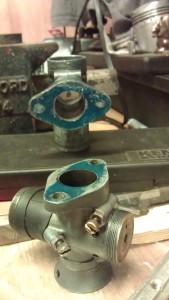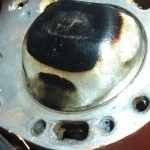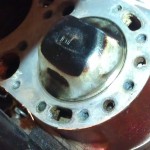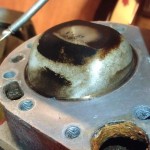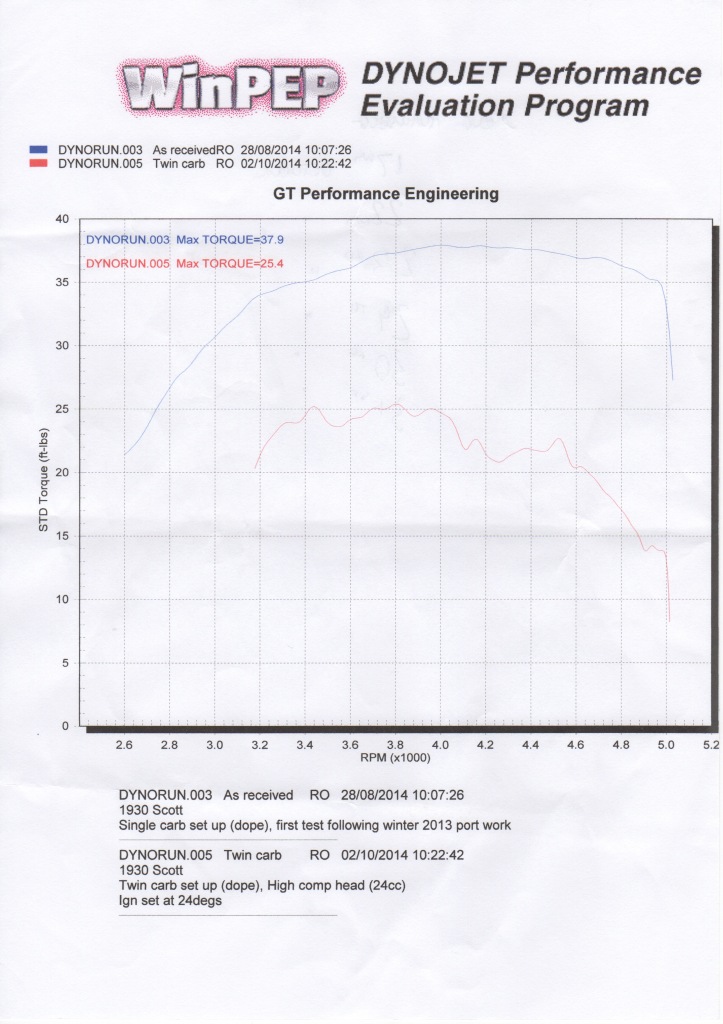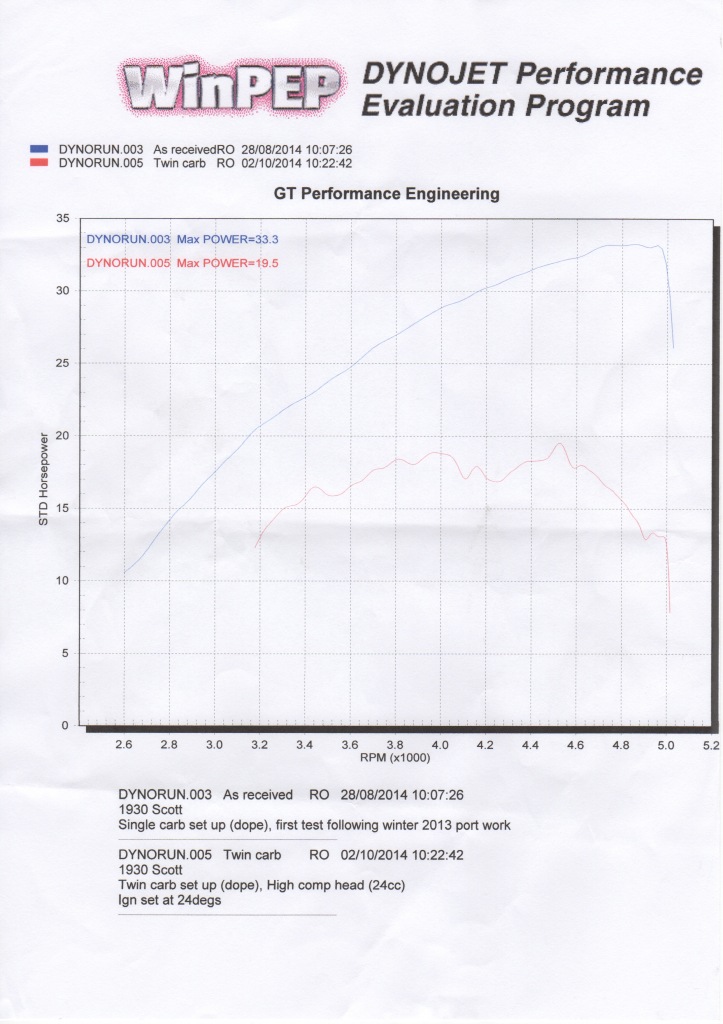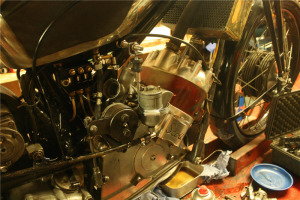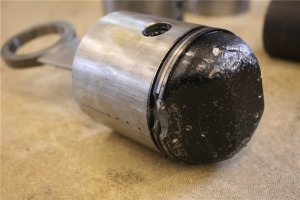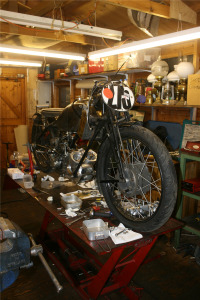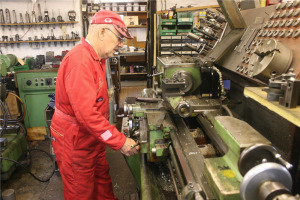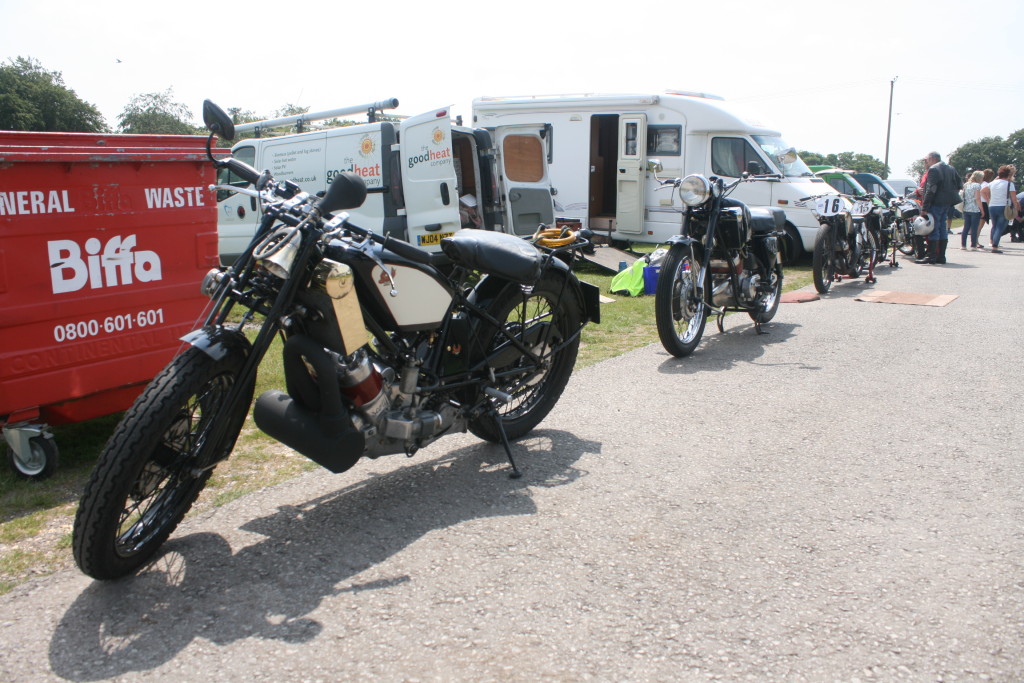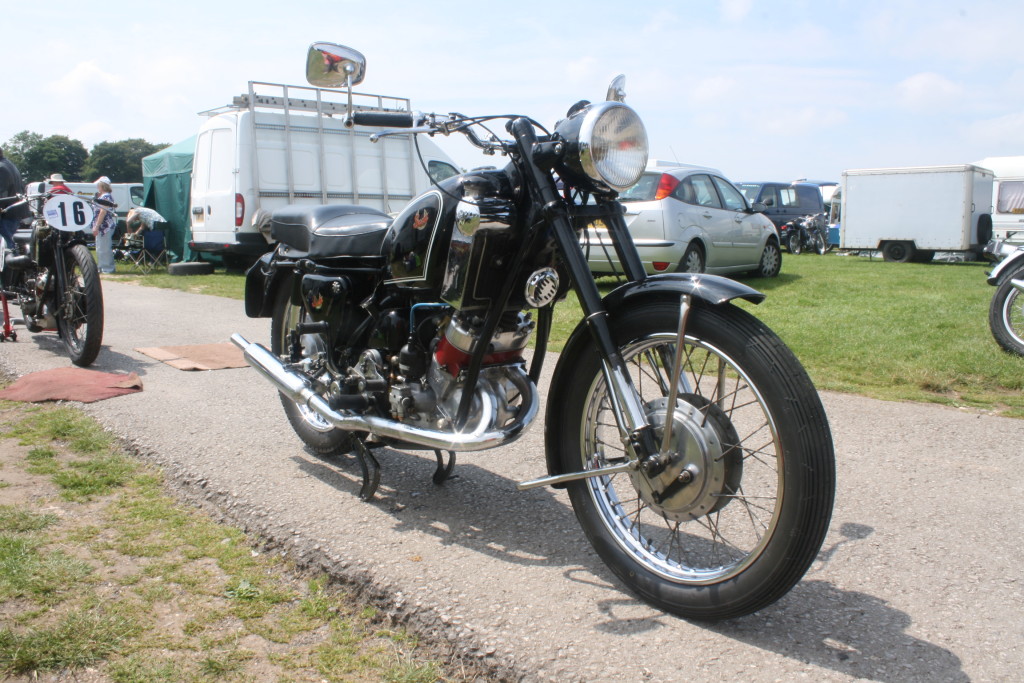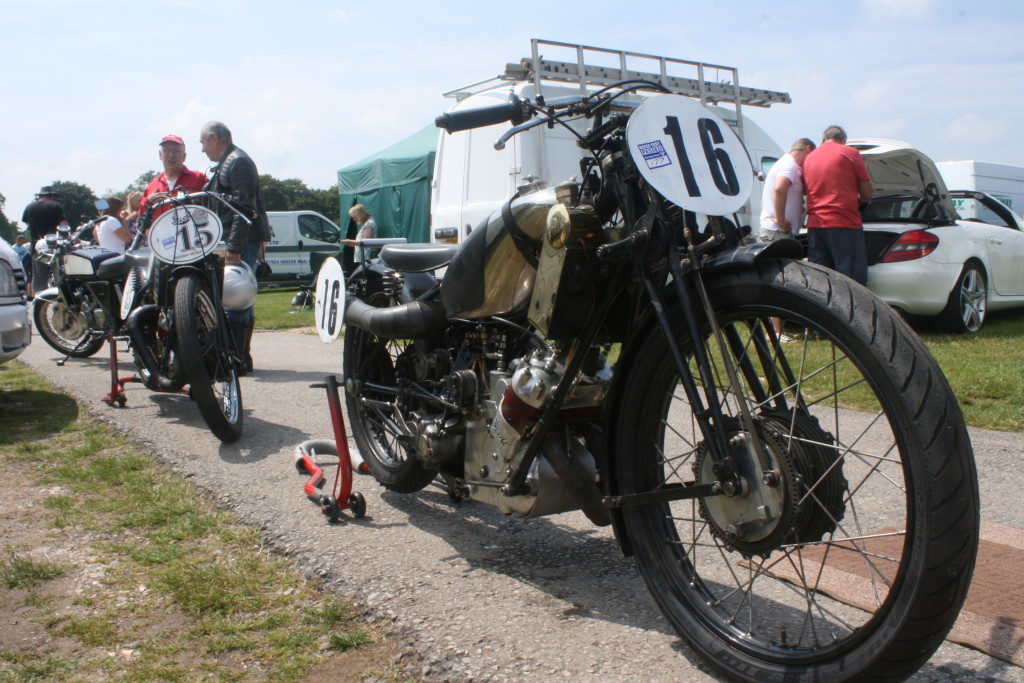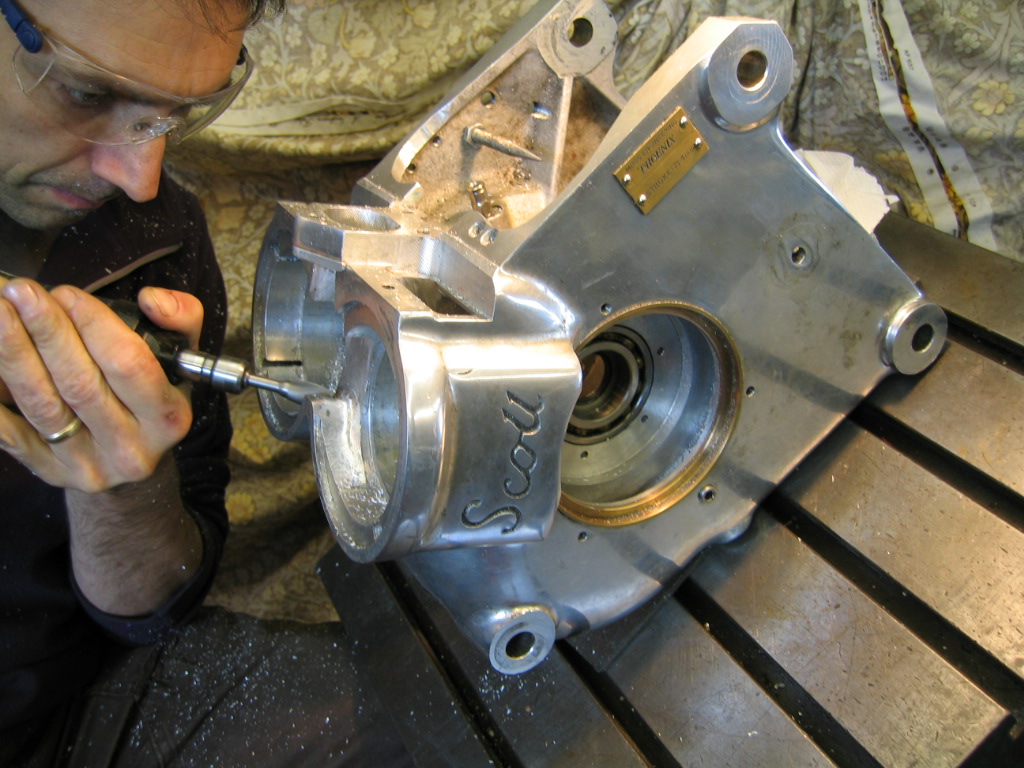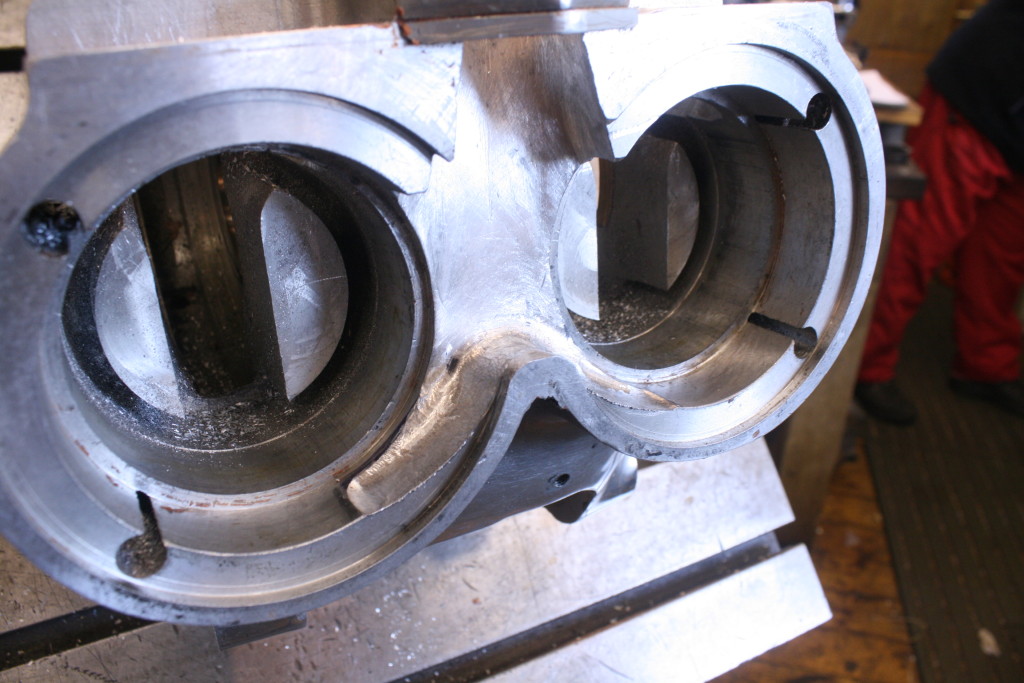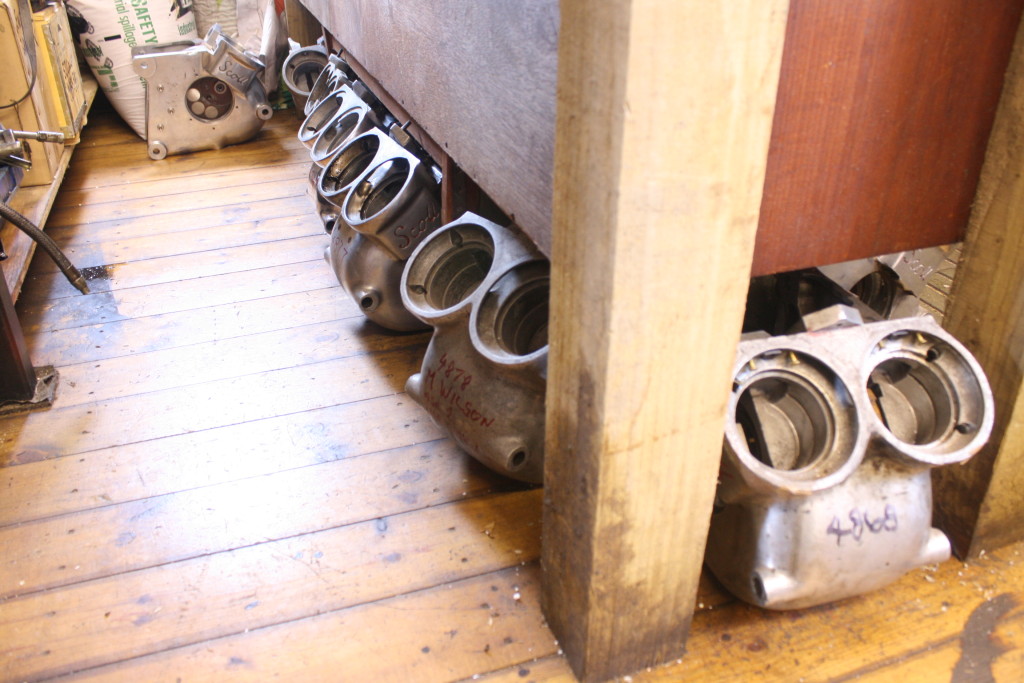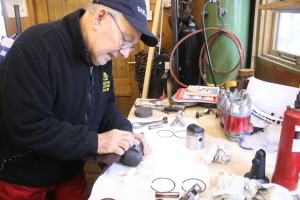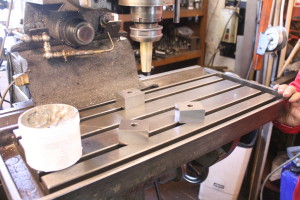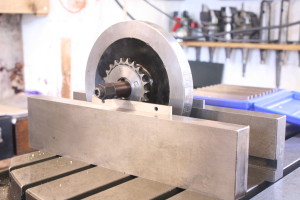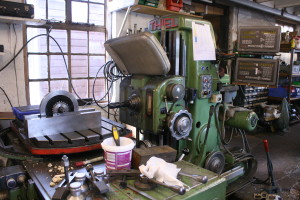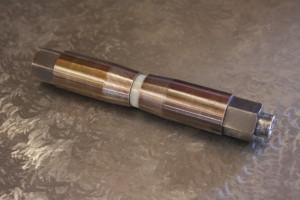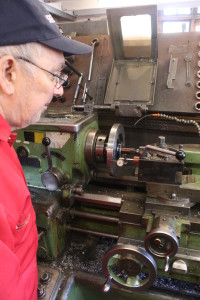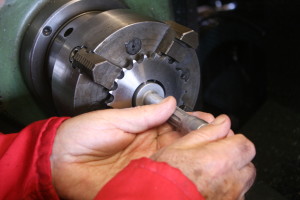The way I’d finished 2014 was with a rough set up of twin carbs on methanol. I’d modified the needles and the jets, but it was all way too rich (post meeting dyno results here) and a rush job really. The truth is, sometimes you have to push through to get something done, knowing that it might need work later. I decided that I would move away from methanol anyway after that last meeting and so it was a case of starting again.
I measured the port sizes last year and the inlet on each cylinder of the Super Squirrel is about 10.25cm². It’s actually less than standard, as we block the rear most inlet apertures up to allow us to put windows in our pistons to aid transfer flow. A Scott standard inlet gallery (cast into the skirt of the barrel) has a lot of small bridged ports which work fine in a standard road machine. In a racing bike, they are not able to flow enough gas quickly enough once the work has been done to enlarge the inlet tract in the crankcase which feeds them. This inlet tract is very restrictive in size and any serious attempts at performance usually involve some substantial work to open this up. The ‘floor’ of the tract rises up as it follows the radius of the central flywheel which is housed immediately beneath it. What we used to do was to reduce the diameter of the flywheel and weld up the bottom of the tract to enable it to be opened out. Of course such a measure means complete re-qualification of the bearing cups and barrel locations as the whole lot will be pulled in to the middle. Not a job for the faint hearted! You can of course improve performance by working on the tract without doing the floor, but it just depends how much performance you want to extract. My crankcase is one of Rogers improved castings with a better floor profile, thicker sections and far better material.
So the inlet was around 10.25cm², but I was using a single overbored Amal type 89, 
Since the Super Squirrel frame will not fit a larger single carb due to the frame tube being in the way, a split manifold seemed to be a good idea. Eddie Shermer made the one I have.
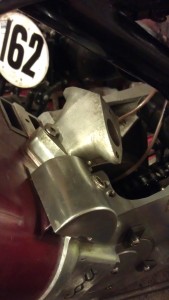
I figured that I would try and get close to the inlet gallery area with the carbs, and so settled on the idea of 2 x 1″ Amal 276 (or 76) with remote float(s) as this pairing give an area of 10.13cm². Although I don’t know what the relative flow characteristics would be between one carb or two of half the area, I guess that the flow rate might be less with two due to a greater proportion of drag from the inside of the greater surface area of carb venturi wall. However, the atomisation could be better. We’ll see. I actually had a 7/8″ Amal 276 and and 1″ 76 and was toying with the idea of getting the 276 bored out. I decide instead to keep an eye on ebay to see if something came up and thanks to someone on the Scott Owners Club forum who spotted one, I bought a singularly unhygienic 1″ Type 76 a couple of weeks ago. It had exactly the same smell as I remembered when my dad’s shed was visited by rats many years ago. I remembered they were so big that the cats used to sleep on high surfaces to avoid having to meet them. It required a lot of scrubbing to get to a point where I could inspect it…
So just the body and the jet block, well corroded in. An evening of gentle heat, wd40 and physical persuasion wrought success and now I am on the way to getting the carb setup back together.
While I was doing this, I remembered that I’d been meaning to remove the head to see if I could detect any patterns which might give some information as to how the bike was running. Initially this came out of a conversation with Ignition and bantam tuning expert, Rex Caunt at Cadwell Park last year and even though I was changing fuels I thought I’d have a look.
I was very interesting…
It could be that the clear sides of the crown indicate that I’ve achieved a functional ‘squish’ clearance preventing detonation (excellent article here). I’d really like to think that but I don’t (next day edit: I’m coming round, it might be a bit of this). It looks more like a tell tale that you wouldn’t normally see, but that my significantly over rich mixture is allowing me to see; the loss of unburnt mixture from the transfers straight owner the top corners of the piston into the exhaust. I might be wrong, but that’s my feeling.
It’s easy to see why it would happen, the transfer port is a bridged rectangular port which operates onto a deflector which is not rectangular, but is rounded at the top corners. The crankcase has stuffers cast in, which is a legacy really from the times where we weren’t running extractor exhausts. With stuffers and an extractor exhaust maybe it’s all a bit high speed into the cylinder and too much is being lost. Although I would expect to have some fresh gas returned to the cylinder prior to the closure of the exhaust port, this initial transfer gas would be short-cutting the scavenge cycle and so is not only unlikely to be returned but also not actually scavenging the cylinder of the remaining exhaust gases. What can I do if it is this? Well, Maybe some better shaping of the transfer bridge would reduce the tendency of the gas to bifurcate and disappear up and over the deflector. Maybe some mild shaping of the deflector could help. I had thought about removing the bridge but it does look like it’s too wide for the ring to cope.
I think it might be a case of planning a better cylinder and possibly looking at this for the Moss/Silk Scott racer too.
It’s all quite late now … I did spend about two hours scraping flat the exceedingly distorted flange on the new carb I bought but it’s still not done. Still, It’s all moving in the right direction.
